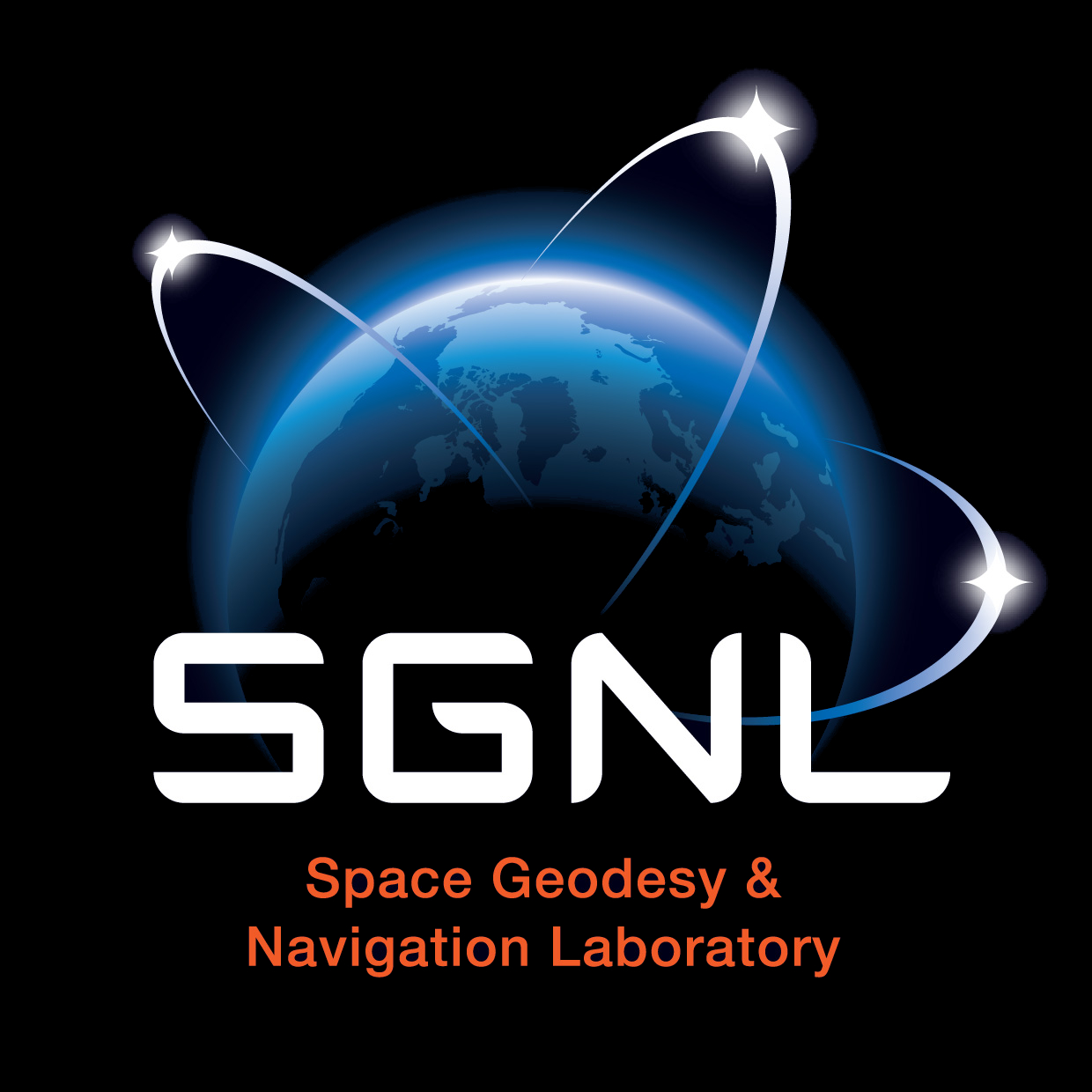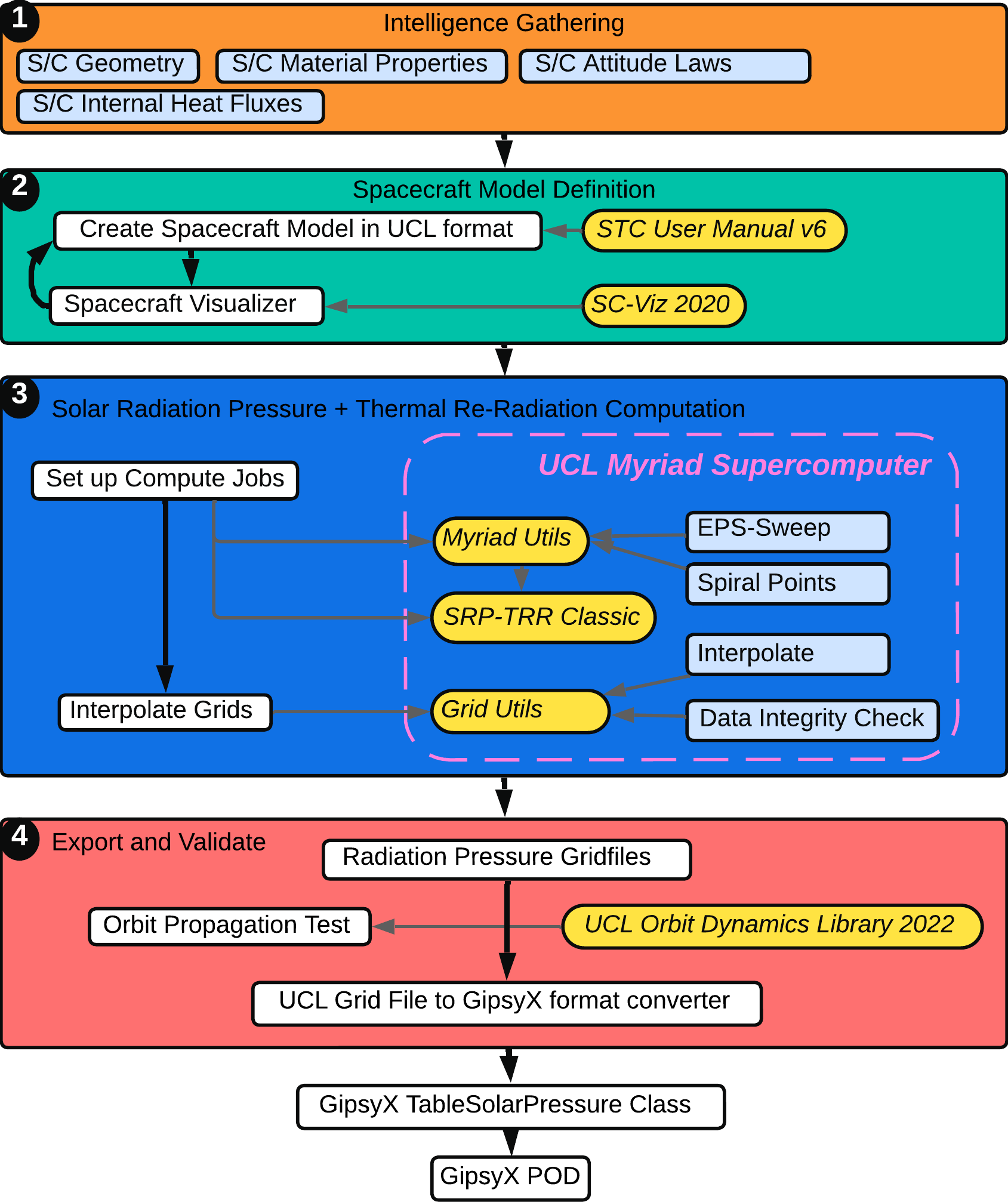

UCL SGNL's Radiation Force Modelling Wiki
An overview of the software tools used to make High Precision, Physics-based Radiation Force Models using the UCL method


An overview of the software tools used to make High Precision, Physics-based Radiation Force Models using the UCL method
This wiki presents an overview of the process for generating a spacecraft radiation force model using the UCL method. The process begins with initial information gathering and extends to integration with advanced orbit propagation/determination tools, such as NASA JPL's GipsyX.
The initial phase of modeling involves gathering information on the spacecraft, either from open source infromation or from direct collaboration with spacecraft engineering teams.
The construction of the spacecraft model focuses on two critical aspects: the accurate representation of its geometry (shape, orientation, and size) and the precise characterization of material properties (which influence interaction with incident or exiting radiation). From this information, the model is written line-by-line in a text file, using geometric primitives. The process is detailed in the STC Manual . The process is iterative, and the utilization of the spacecraft visualizer is key for obtaining quick and frequent feedback during this phase.
Following the completion of the spacecraft model, the next step involves generating the radiation force model using SRP-TRR Classic (STC), a C++ program. STC takes the detailed spacecraft model and material properties to produce a set of files that constitute the radiation force model.
Due to the computation-intensive nature of this process, it is typically executed on the UCL Research Compute Cluster (Myriad).
Upon successful computation, the radiation force model is ready for testing in orbit propagation scenarios and can be integrated into other orbital analysis tools.
The following sections detail the specific roles of each code repository involved in this process. Click on the headers for access to the corresponding repositories. Please note that certain repositories require appropriate permissions for access.

JavaScript-based spacecraft model visualizer. To set up and access the visualizer, follow these steps:
C++-based solar radiation pressure and thermal re-radiation calculations.
Resampling the grid files for use in simulations
The 2022 version of our full-fidelity C++ orbit propagator.